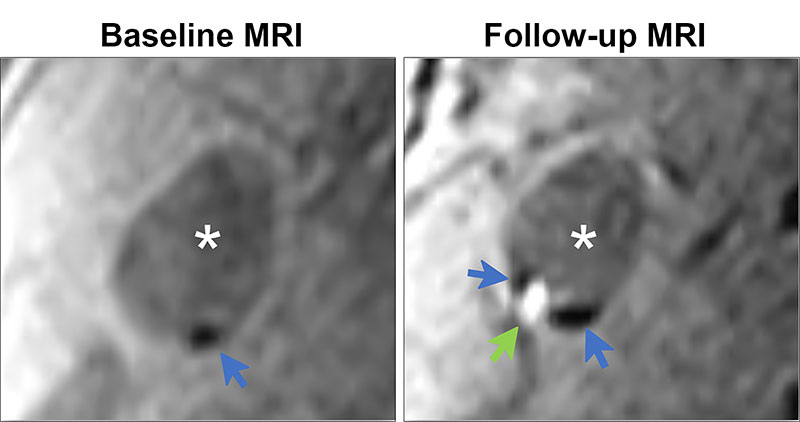Carotid Plaque May Pose Danger Over Time
Understanding plaque evolution may help doctors better predict stroke risk

Using data from the Rotterdam Study in the Netherlands, researchers have uncovered that carotid artery plaques can undergo potentially dangerous changes over time in patients without symptoms, according to a study was published in Radiology.
Atherosclerotic plaques are accumulations of fat, cholesterol and other substances in the arteries, and over time these plaques can calcify. The degree of calcification is thought to promote plaque stability, which then potentially reduces the risk of possible rupture. Ruptured plaques can lead to the formation of a blood clot and possible stroke.
“It is important to remember that plaques that don’t yet cause symptoms can rapidly evolve in ways that make them more dangerous,” said study author Daniel Bos, MD, PhD, an associate professor in clinical epidemiology and neurovascular imaging at Erasmus MC, University Medical Center Rotterdam in the Netherlands. “One of the key findings of our work is that calcified plaques may not be as harmless as once thought, since these plaques were found to be at risk of intraplaque bleeding, which in itself is the most important cause of plaque rupture and subsequent stroke.”
MRI has become one of the best modalities to evaluate carotid plaque composition. Improved imaging techniques are uncovering new evidence relating to plaque composition and how it evolves through the years, affecting plaque stability. “Understanding this evolution could help doctors better predict stroke risk,” Dr. Bos said.

Demonstration of colocalization of pre-existing calcification and incident intraplaque hemorrhage (IPH) in the same plaque. Axial cross sections of the same plaque at the same arterial location on a scan obtained with a T1-weighted gradient-echo noncontrast MRI sequence in a 70-year-old female participant who was free of coronary heart disease and stroke before follow-up MRI. Baseline (left) and follow-up (right) MRI examinations. The blue arrows highlight calcification in a hypointense signal area, while the green arrow indicates IPH as a hyperintense signal. The asterisks mark the lumen of the carotid artery.
Proactive Monitoring, Risk Factor Management
For the study, researchers followed 802 patients from the Rotterdam Study—an ongoing large-scale, population-based study based in Rotterdam—aged 45 years and older with subclinical carotid artery atherosclerosis.
Baseline MRIs of carotid plaque compositions were conducted and then repeated after six years. All participants were in pre-symptomatic stages of their disease.
Over the course of the research, plaques became more complex, developing multiple components such as calcification, bleeding and fatty deposits. Changes towards more complex plaque composition were more common in men than in women.
The study showed that compared to plaques without calcification, plaques that already had calcification were twice as likely to develop internal bleeding, which is a key indicator of plaque vulnerability and potential rupture.
The researchers also did a simulation to predict plaque evolution beyond the six years. A simulated 30-year evolution showed that more than half of the participants who had single component plaques would develop into complex multicomponent plaques by the age of 70.
The researchers indicate that future studies should examine exactly how the different components within a plaque influence each other, for example how calcification affects intraplaque hemorrhage.
Given the study’s demonstration of significant plaque evolution over time, Dr. Bos emphasized the importance of ongoing plaque monitoring and proactive risk factor management.
“Even if there are no symptoms, early signs of plaque in your carotid arteries can quietly become more dangerous over time,” Dr. Bos said. “Regular check-ups and managing risk factors like blood pressure, cholesterol, smoking and diabetes are important, because plaque changes can happen without warning.”
For More Information
Access the Radiology article, “Evolution of Subclinical Carotid Atherosclerotic Plaque Composition Using Serial MRI in the Rotterdam Study.”
Read previous RSNA News stories about cardiovascular risk: